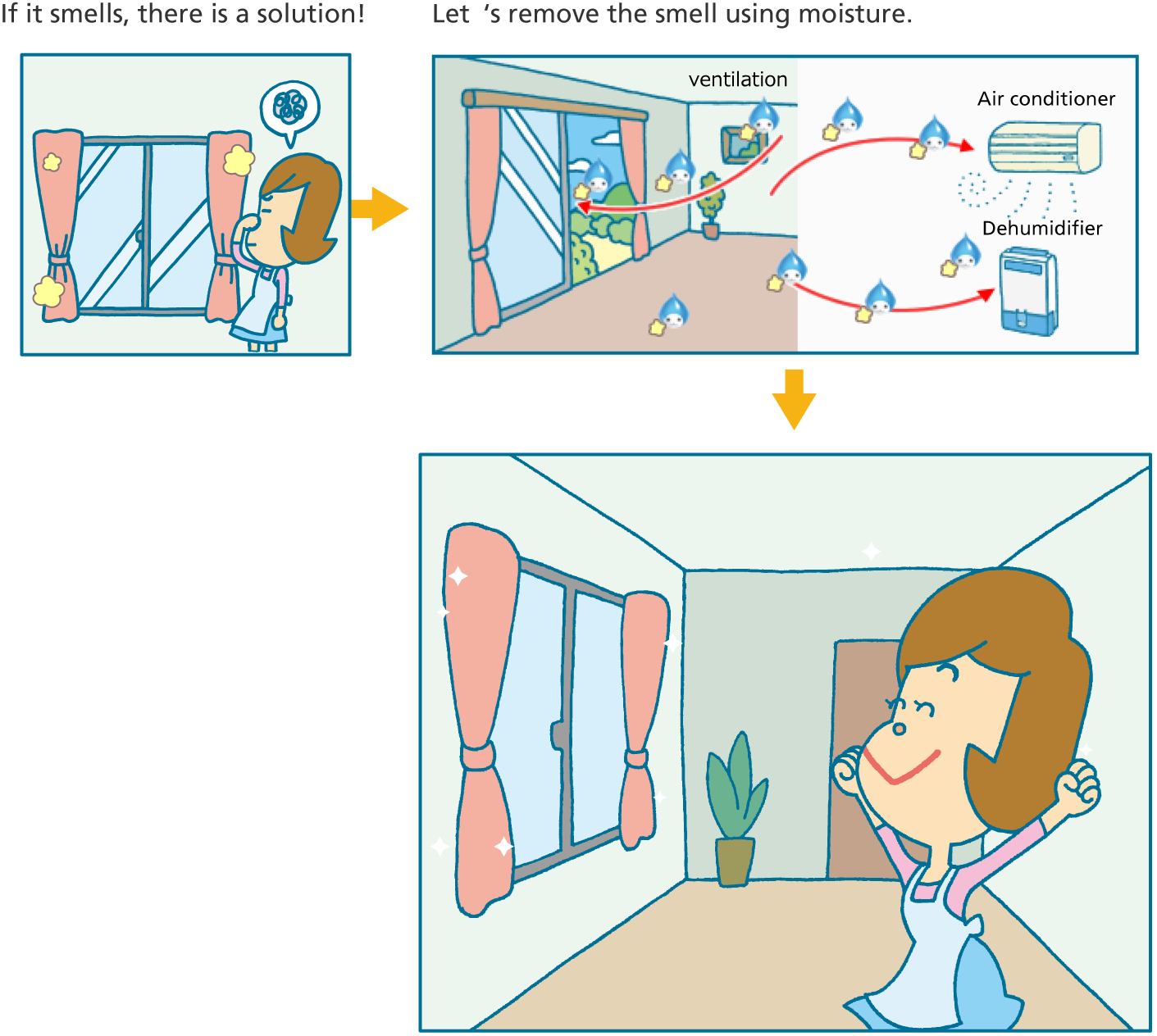
Problem
Problem
Humidity
Rainy season is humid so you may feel hot and humid even when the temperature is low.
This is because the sensible temperature is determined not only by temperature but also by a total of 6 elements including humidity, air current, radiation, amount of clothing and activity quantity. The higher the humidity, the higher the sensible temperature.
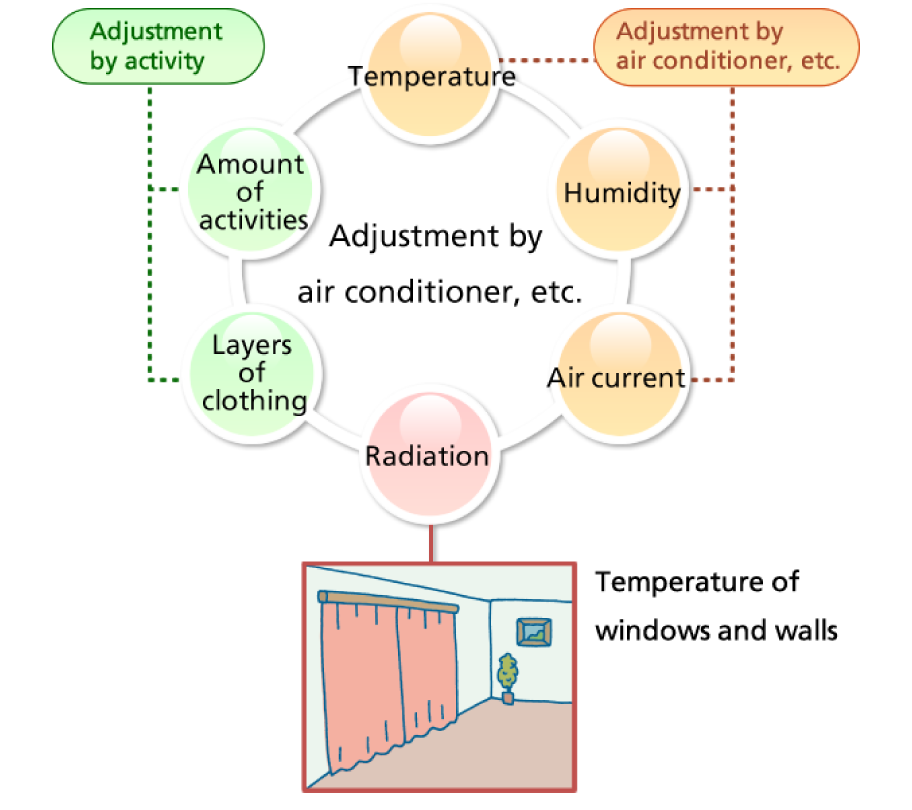
Heatstroke location in 2017
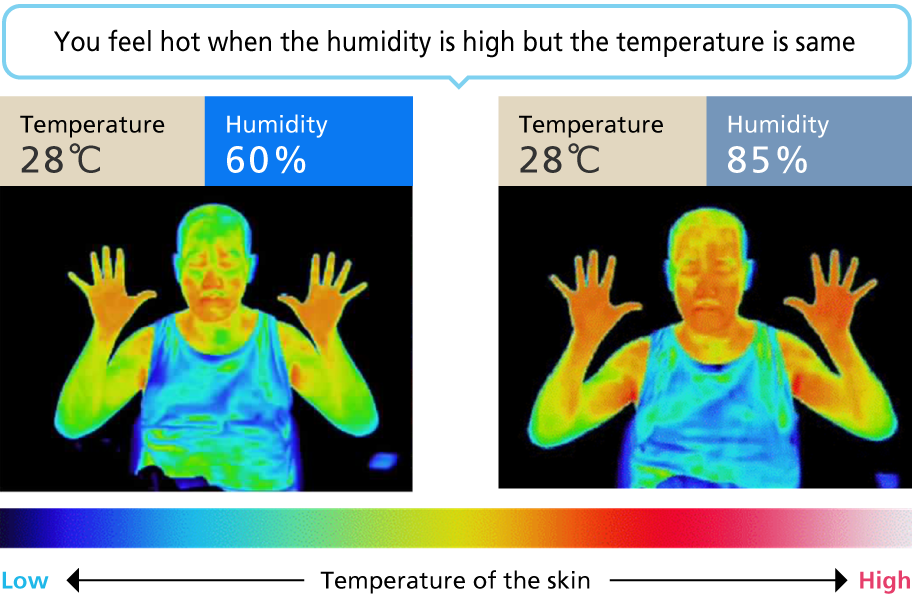
Health effects
If the rainy season continues, the humidity will exceed 80%, and the environment will be suitable for molds and mites to increase.
Molds and mites cause allergies to humans, so the risk increases during the rainy season.
Smell of laundry
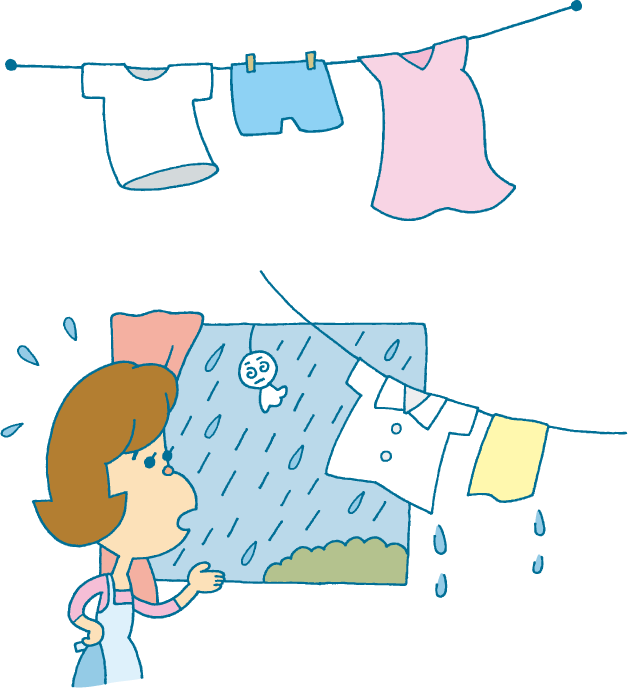
During the rainy season, many people hang their laundry indoors. But if you dry it in the room, it may cause an unpleasant smell.
The causes are "protein stain" which is secreted from the body and adheres to clothes and cannot be removed by washing, and bacteria which proliferate in a half-dried state.
It is assumed that unpleasant odors are generated by chemical decomposition of dirt itself, action by bacteria, and high temperature conditions during drying in the room. It is said that they are complex odors mixed with various ingredients.
Solution
Dehumidification using air conditioners
How to use air conditioners during the rainy season
In midsummer when temperature is high, "cooling operation" is appropriate, but in rainy season when humidity is high, "dehumidification operation" is recommended.
Difference between "cooling operation" and "dehumidification operation"
The cooling operation and the dehumidifying operation have different roles.
The cooling operation is intended to reduce the temperature while the dehumidification operation is intended to reduce the humidity.
There are two types of dehumidification operation:
(1) Dehumidify by slightly lowering the temperature in a weaker cooling operation "Low Cooling Dehumidification"
(2) Return the air after lowering the temperature to a suitable temperature "reheat dehumidification".
Some Daikin air conditioners are equipped with a "Hybrid Dehumidification" that helps prevent overcooling by constantly adjusting the air conditioner's capacity according to the amount of moisture in the room.
Comparison of cooling and dehumidification
| Cooling | Low Cooling Dehumidification | Reheat Dehumidification | Hybrid Dehumidification | |
|---|---|---|---|---|
| Purpose of the function | Lower the temperature | Remove humidity | ||
| Room temperature | Fall to the lowest level | Drop a little | Doesn’t go down that much * | |
| Power Consumption | Less than reheat dehumidification | Similar to cooling | More than air-conditioning | Similar to cooling |
* Dehumidification operation with a decrease in room temperature of 2ºC or less (difference between suction temperature and outlet temperature) as determined by the Japan Refrigeration and Air Conditioning Industry Association.
Dehumidification using a dehumidifier
How to use a dehumidifier
If the room temperature is about 25ºC, the humidity setting of the dehumidifier should be 40 - 60%. If air conditioner is used, the humidity setting may be a little higher because the air flow slightly lowers the sensible temperature.
If you are away from home during the day, dehumidifying while you are out is recommended. If the house is airtight, you can dehumidify the whole floor by opening the door of the room.
We recommend you to put a dehumidifier in a room on the north side where the temperature gets lower.
The room temperature of the room on the north side is lower compared to the south side where it is easy to get sunlight.
In a closed space, moisture tends to be uniform in all rooms, but the lower the temperature, the less moisture can be in the air, and the higher the relative humidity.
In a highly airtight house, you can dehumidify an entire floor by opening the door of each room and using a dehumidifier while you are away.
Tips for drying in the room
A lot of moisture is released from laundry, so when you dry it in your room, make an escape path for moisture.
Here's how to dry your laundry quickly:
Dry laundry quickly with the combination of air and dehumidification.
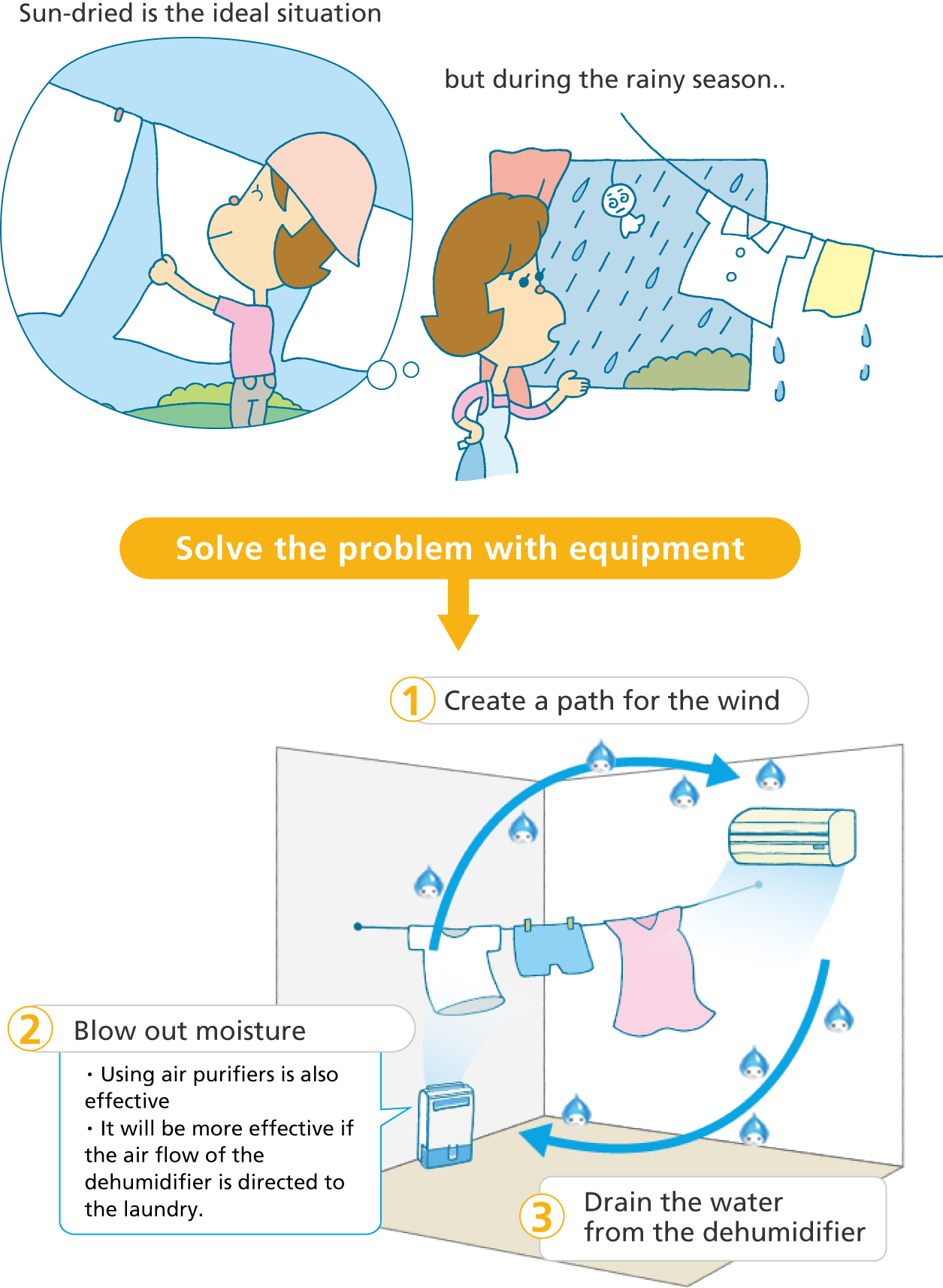
The most important thing is #3 dehumidification. If the room is dry enough without wind, water evaporates quickly.
Also, the higher the temperature, the easier it is to dry, so it is better to dry it in the room on the south side where it is easy to get sunlight.
If you dry it quickly, it won't smell. If you dehumidify, bacteria will decrease.
Comparison of bacterial presence in laundry with and without dehumidification
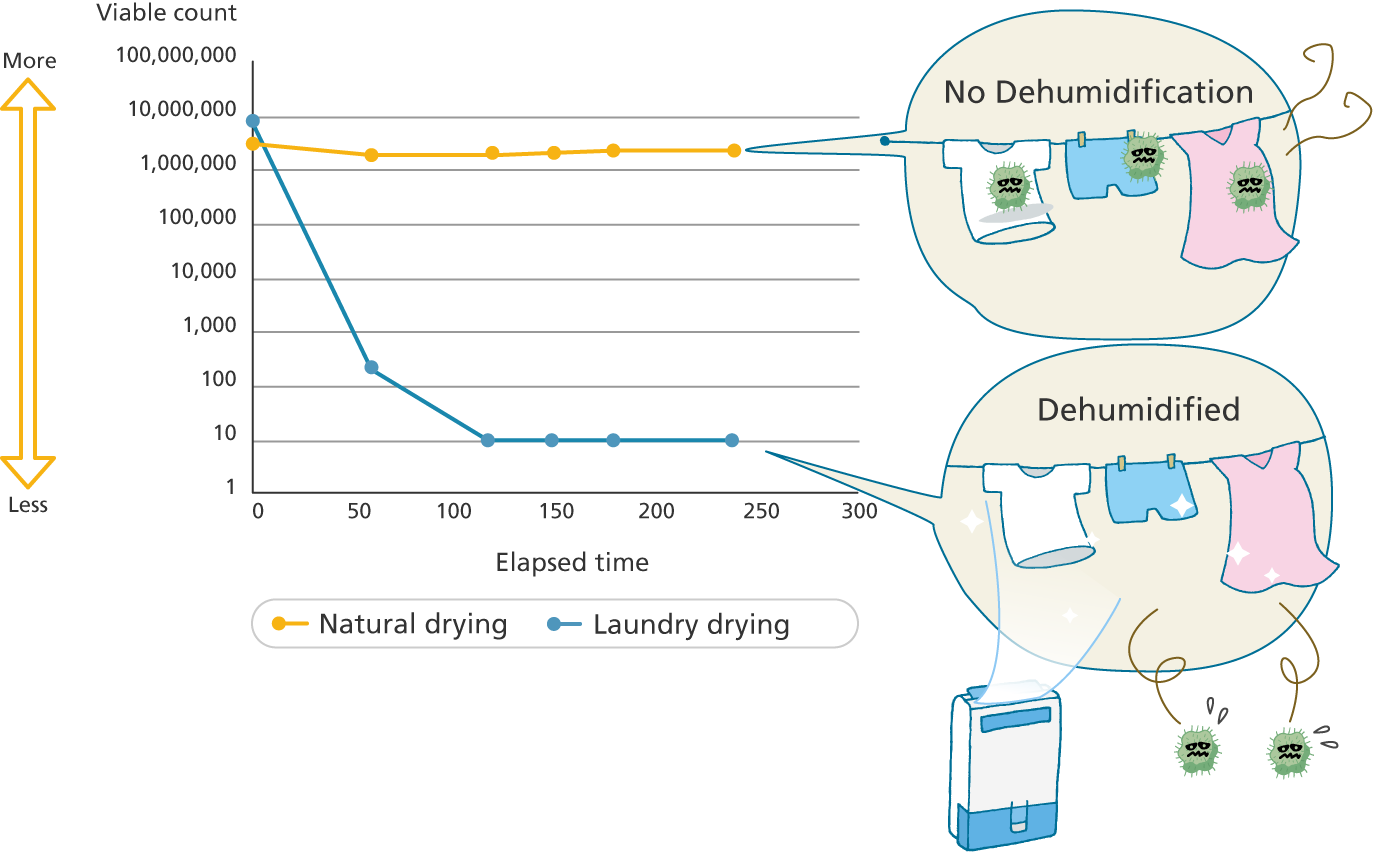
Test condition
Gauze (About 5 cm x 5 cm, folded into 12 pieces.) was dripped with 1 ml of the test organism solution, dried under each condition, collected over time, washed out, and cultured on agar medium.
The number of viable bacteria was determined by measuring the number of colonies.
Daikin Study
What is humidity?
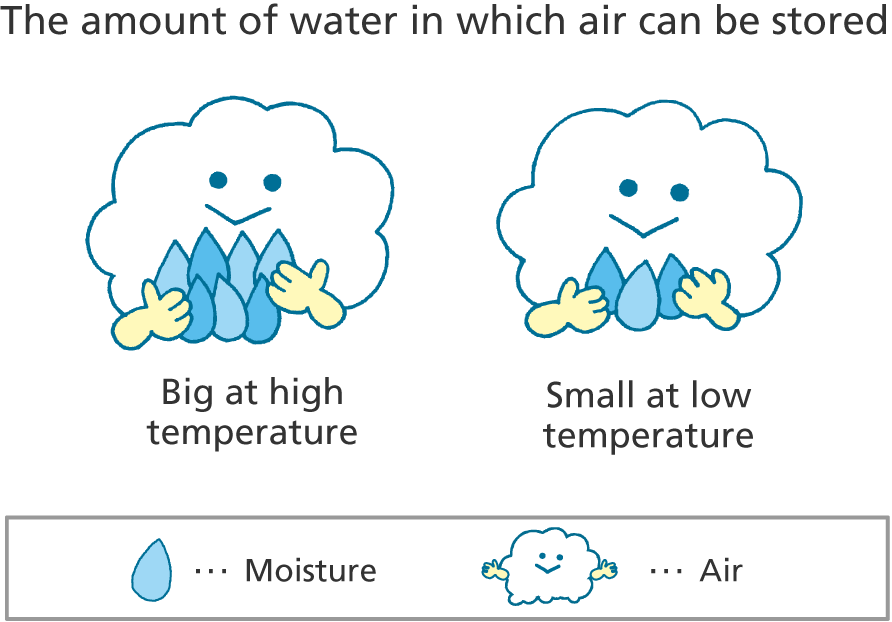
- The air contains moisture. This is the origin of humidity.
- The amount of water that air can contain called saturated water vapour content depends on the temperature of the air: warmer air can contain more water.
Air conditioner dehumidification system
In the air conditioner, there are many layers of aluminum fins called heat exchangers.
During cooling operation, chlorofluorocarbon gas, compressed by a compressor, flows through the copper tube and cools the aluminum fins.
Air gets cooled as it flows through the fins.
When the aluminum fin is cooled, the surrounding air cools down, reducing the amount of water that can be contained, and the moisture that the air cannot hold accumulates.
The moisture condenses on the fins and is discharged outside through the drain hose, so the amount of moisture in the room decreases and air is dehumidified.
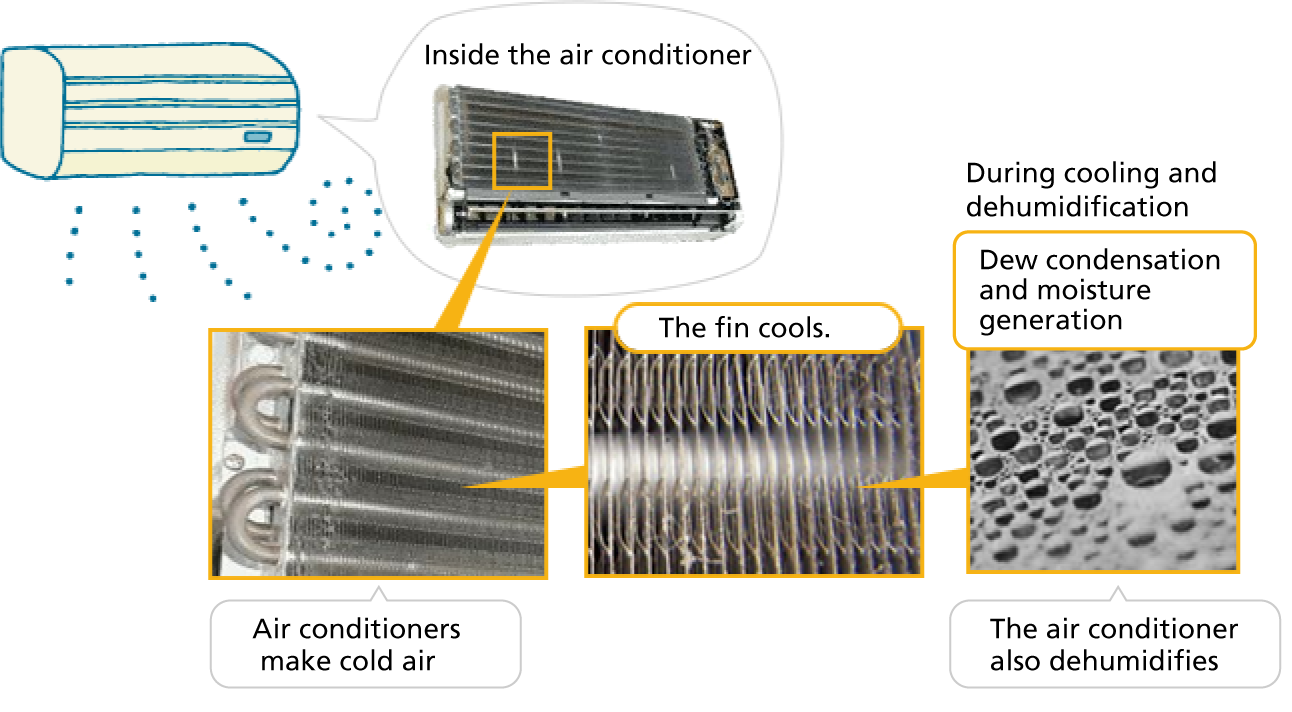
Air conditioner maintenance
Water droplets are generated in the indoor unit during cooling operation.
During operation, the air conditioner is cold so there is no need to worry about the growth of mold. However, when it stops, the temperature inside will rise which makes the environment favorable for mold due to the temperature and humidity.
Therefore, this moisture must be released after the air conditioner stops.
Specifically, it is effective to blow air for 1-2 hours with a timer after stopping the air conditioner. Recently, there are more and more air conditioners that automatically blow air after the operation ends.
However, the humidity will be released in the room, so it's better to turn on the ventilation fan. Mold grows with dust as a source of nutrition, so it is important to prevent dust from accumulating in the air conditioner. Clean the air filter frequently to reduce the amount of dust inside the air conditioner. Recently, there are air conditioners that automatically clean the dust in the filter, so it is convenient to choose such products.
Let‘s dry the indoor unit after using the air conditioner.

Dehumidification mechanism of dehumidifier
Dehumidifiers can be classified into two types: "compressor type" and "desiccant type".
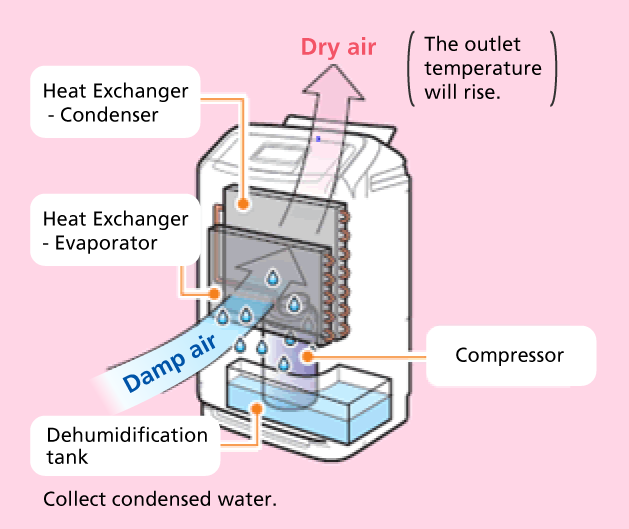
Compressor type
A dehumidification system that uses a compressor, which is also used in air conditioners. A compressor is used to change the temperature of the refrigerant so that moisture in the air drawn in and condenses in the cooled heat exchanger. It reduces humidity by removing moisture and releasing dry air into the room.
It has a feature that the higher the dehumidification performance is, the less power consumption during high temperature and humidity such as the rainy season.
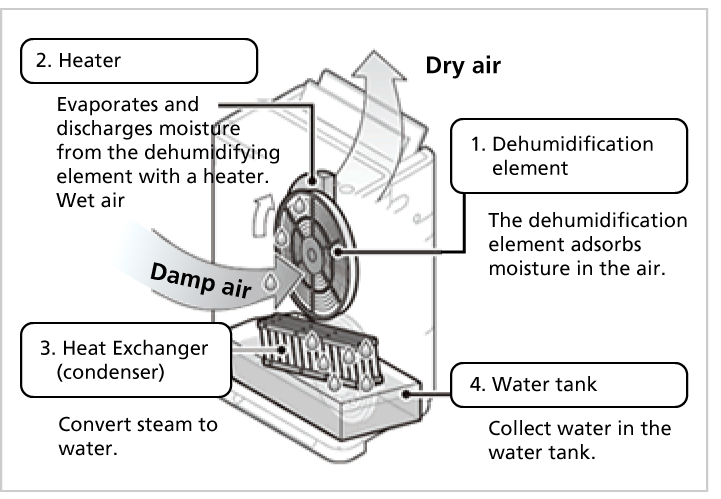
Desiccant type
A dehumidification system in which moisture in the air is absorbed by a moisture absorbent called desiccant. The absorbed moisture is evaporated by a heater, and the evaporated moisture is condensed in a cooled heat exchanger. It reduces humidity by removing moisture and releasing dry air into the room. Because it uses a heater, it consumes a lot of power, and the room temperature tends to rise, so it is not suitable for summer use. Recently, hybrid dehumidifiers that combine compressor type and desiccant type are also sold.
Comparison of compressor type and desiccant type
| Compressor type | Desiccant Type | Hybrid Type | |
|---|---|---|---|
| Room Temperature | Doesn’t rise so much (2 - 4ºC) | Rises (3 - 8 ºC) | Barely rises |
| Power consumption | ◎ | △ | ○ |
| Dehumidification characteristics | ・High dehumidification ability in rainy season with high temperature and humidity ・Dehumidifying capacity in winter becomes low |
The dehumidifying capacity in winter is stable | The dehumidifying capacity in winter is stable |
Dehumidifier Maintenance
Drain the water accumulated in the tank as soon as possible. Wipe and dry it immediately to prevent mold and bacteria from growing. Similar to air conditioners, compressor-type dehumidifiers generate water droplets inside the dehumidifier during dehumidification operations. This must be drained after operation is stopped. It is effective to operate air blowing for about an hour after stopping. Recently, the number of dehumidifiers that automatically blow air after operation is increasing.
Mold removal in closet
The closet during the rainy season has a lot of moisture in the futon, so if you leave it as it is, your futon will get moldy, smelly, or even cause sickness. Moisture absorbed by the futon can be air-dried as shown in the figure below.

The most important thing is (3) dehumidification. If the room is dry, you can expect a great effect just by dehumidifying.
However, it takes 2 to 3 days to remove the moisture from the futon. Therefore, if you place importance on speed, the most effective way is to dehumidify with direct airflow.
Let's dehumidify the room with a dehumidifier or an air conditioner and direct dehumidifying air to the closet with a fan.
If you use a dehumidifier, the room temperature rises a little, so it is recommended to use an air conditioner while you are in the room.
Deodorize the room
The smelliest time of the year is the humid rainy season.
As a result of research, we found that about 80% of the respondents had some dissatisfaction with the smell, especially from the rainy season to summer.
House odor (N = 457)

The smell of the house is generated from the kitchen and permeates the wall.
The main source of household odors is cooking odors in the kitchen.
Odors that could not be removed by the ventilation fan will move to the living room and stick to the wall or sofa.

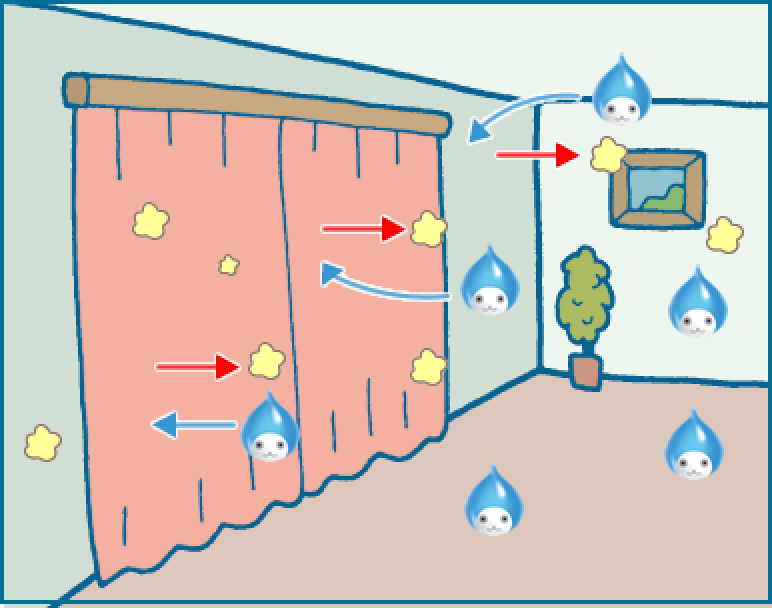
On humid days, the odor is released from the wall due to moisture.
The molecules of the odor adsorbed on the wall are about the same size as water vapor, so they are pushed out by the water vapor permeating the wall and released into the room on humid days. This is the cause of the bad smell of the rainy season.
Odor from the wall can be removed with moisture.
This principle can be used to remove odors from walls. If you humidify the room to about 60%, the odor will be released from the wall, so you can remove the odor by dehumidification and ventilation.
Odor and humidity are compatible so dehumidification can remove both moisture and odor. During the rainy season, the indoor humidity is high so dehumidifying alone is effective.
Odor absorbed by the wall
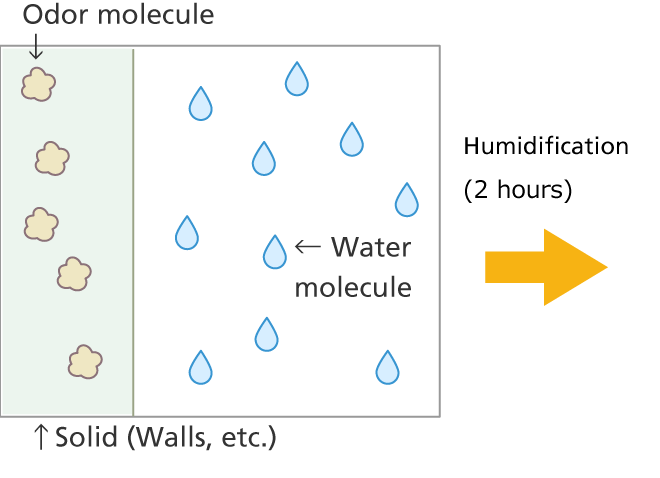
Physical adsorption of odor molecules
The amount of physisorption depends on pressure and temperature.
Use moisture to remove odors from walls
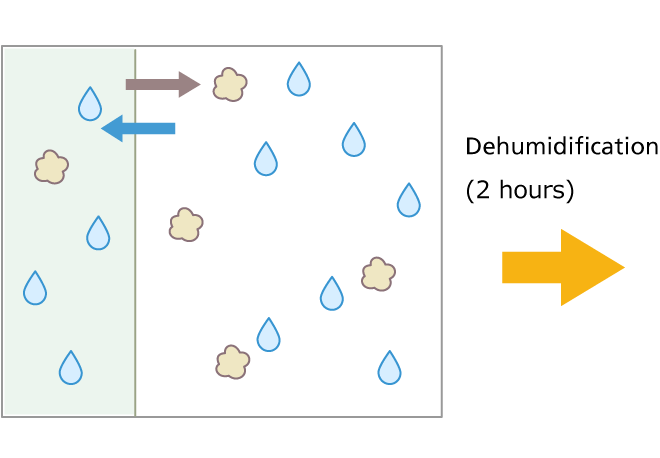
Physical adsorption force << affinity with water
When humidity increases in the room, a force acts to make the concentration in the space and solid the same, and odor molecules are eliminated.
Removes odor along with moisture
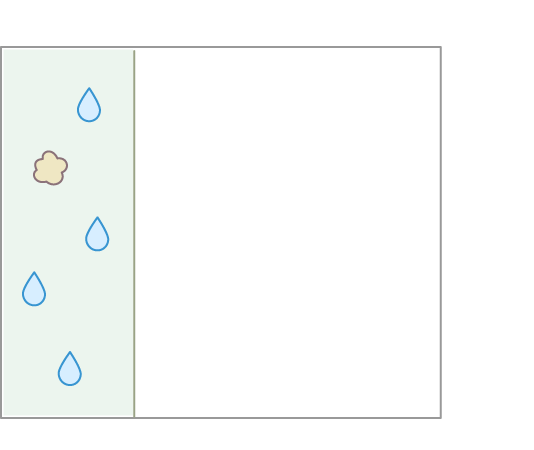
Dehumidification
Floating odor can be removed together with water molecules.
If you remove water vapor, the smell will also be removed.
The rainy season is a chance to deodorize the walls. Depending on the weather, let's use ventilation, dehumidifiers, and air conditioner dehumidification to get rid of moisture together with odor.
